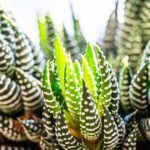Are you looking for a unique and interesting way to spruce up your home? Look no further than the nerve plant (Fittonia), an exotic and eye-catching houseplant. This attractive plant features lush foliage with bright pink or white veins running through its leaves in intricate patterns, giving it a delicate, fairy-like look that is sure to make a statement in your space. Not only is it gorgeous to look at, but it’s also easy to care for, making it perfect for those new to gardening. In this article, we’ll discuss how to grow and care for the nerve plant so that you can enjoy this beautiful houseplant for years to come.
The nerve plant is an excellent choice for anyone looking for a low-maintenance houseplant that still looks stunning when properly cared for. While most varieties require warm temperatures, moist soil, and indirect light, there are species of Fittonia that can thrive in lower light conditions as well. With its ability to tolerate humidity and low light levels, the nerve plant is the ideal addition to any room in your home.
In addition to its beauty and ease of care, the nerve plant has other benefits too! It’s a great air purifier – removing toxins from your environment while providing oxygen – as well as being a natural insect repellent due to its unique aroma. With all these advantages combined, it’s no wonder why Fittonia is one of the most popular houseplants around! Read on as we explore how you can get started growing and caring for this beautiful houseplant today.
Selecting And Purchasing Your Nerve Plant
It’s a funny coincidence that so many people are interested in growing and caring for nerve plants, also known as Fittonia. After all, these unique houseplants are fairly easy to care for and offer a fantastic splash of color in any room. If you’re planning on getting your own nerve plant, here’s what you need to know about selecting and purchasing one.
First things first: the size of the plant. Nerve plants come in a variety of sizes, from petite varieties that fit on windowsills to larger varieties that take up more space. Decide how much room you have available before making your purchase – it’ll save you time and money in the long run!
Next, consider whether or not you want a mature plant or a younger one. Mature plants will be more expensive but they’ll also be easier to care for since they’ve had some time to adjust to their environment. On the other hand, younger plants usually cost less but may require extra attention until they’re established. Whichever option you choose, pay attention to the overall health of the plant when selecting it – look for vibrant leaves and make sure there are no signs of pests or disease present. With a bit of luck and careful selection, you’ll be able to find the perfect nerve plant for your home!
Planting Your Nerve Plant
Once you have purchased your nerve plant, it’s time to get planting. The best way to do this is by using a potting mix specifically created for houseplants. It should contain organic material such as peat moss and perlite or vermiculite. These ingredients will help the soil retain moisture, while allowing the plant to grow in a well-aerated environment. When selecting the pot, make sure it has plenty of drainage holes so excess water can escape and not cause root rot.
In addition to using a potting mix, you should also consider adding some fertilizer to the soil. This will provide extra nutrients which are beneficial for growing fittonia plants. Aim for a balanced fertilizer with equal quantities of nitrogen, phosphorus, and potassium. It is also important to select one that is labeled as ‘safe for indoor use’.
Once planted in its new pot, place your nerve plant in bright indirect light near an east-facing window or other location with filtered sunlight throughout the day. If your home does not have enough natural light, you may need to invest in artificial lighting for your fittonia. Be sure to keep an eye on the soil moisture levels and water when needed – too much or too little can cause problems for this sensitive houseplant!
Nerve Plant Soil Requirements
When it comes to soil requirements for nerve plant, the type of potting soil you choose is important. A well-draining mix with some organic matter is ideal. Look for a potting mix that contains ingredients like compost, peat moss, and vermiculite. Make sure the mixture isn’t too heavy or dense, as this can make it difficult for the roots to grow and cause the plant to become waterlogged.
It’s also important to consider pH when choosing a soil mix for your nerve plant. The ideal pH range is between 5.5 and 6.5, which is slightly acidic but not overly so. You can purchase a pH-testing kit from your local gardening store if you want to verify the pH level in your potting soil before planting your nerve plant.
Adding an organic fertilizer to the soil can help give your nerve plant an extra boost of nutrients throughout its growing season. Just be sure to follow package instructions when applying fertilizer, as too much can be harmful to the delicate roots of this houseplant.
Light Requirements For Nerve Plant
The nerve plant is a beautiful and vibrant addition to any home or office. Its bright green leaves and splashes of pink, red, or white veins make it an eye-catching centerpiece. Like any houseplant, however, the fittonia requires the right conditions for success. In this section, we’ll explore the light requirements for keeping a healthy nerve plant.
When it comes to nerve plants, more light is better than less. Place yours in an area that receives medium to bright indirect sunlight – think east-facing windowsills or near lightly shaded south-facing windows – for best results. Direct sunlight can burn the foliage so be sure to keep your fittonia away from direct rays. If your environment doesn’t provide enough natural light, you may want to supplement with artificial lighting like fluorescent bulbs placed 3 feet above the plant.
Your fittonia will thank you if you can provide consistent light throughout its growing season (fall through spring). During summer months when days are longer and brighter, reduce the amount of light by placing plants in shadier locations or farther away from windowsills. With proper care and attention to light requirements, your nerve plant should continue to thrive all year round!
Watering And Humidity Requirements
Watering and humidity requirements for nerve plant are just as important as the light requirements. If you want your fittonia to thrive, it’s essential to provide it with the right amount of moisture. Water your plant whenever the top inch or two of soil feels dry, but avoid letting the soil completely dry out. You can help maintain adequate humidity levels by misting your plant regularly or placing it near a humidifier. Additionally, grouping plants together in a tray filled with pebbles and water can help keep the air surrounding them more humid.
When watering your fittonia, make sure to use lukewarm water that’s free from chlorine or other chemicals. Also, instead of pouring water over its leaves, try to focus on evenly moistening the soil around its roots. This will help prevent any fungal diseases from developing on its foliage. Finally, give your plant a good soak at least once a month during the growing season and let excess water drain away before putting it back in its pot.
By following these watering and humidity tips for nerve plants, you’ll be giving them all they need to stay healthy and happy indoors! With proper care and attention, your fittonias can look great for many years to come.
Fertilizing Your Nerve Plant
After you’ve taken the steps to create an ideal environment for your nerve plant, it’s time to move on to fertilizing. Fertilizing is an important part of taking care of fittonia and will help keep it looking healthy. You don’t have to fertilize every time you water, but about once a month should be sufficient. A balanced liquid fertilizer diluted to half strength is the best choice for nerve plants. Simply add the fertilizer to your watering can when you water and apply it directly to the soil–it’s that easy!
It’s also important not to overfertilize your nerve plant; this can cause damage or even kill it. Too much fertilizer will burn the roots and leaves, so take care not to use more than necessary. Additionally, make sure not to fertilize in winter when growth slows down naturally–it won’t need as much nourishment during this time.
With proper fertilization in mind, let’s now turn our attention towards pruning and repotting your nerve plant. Pruning is necessary if you want your fittonia to stay healthy and full; this helps promote new growth while removing dead or dying leaves. Repotting should be done at least once a year, usually in springtime; this allows for fresh soil and more space for your fittonia’s root system to grow.
Pruning And Repotting Nerve Plant
Like an artist, pruning and repotting nerve plant is a creative way to express yourself while caring for your plants. Pruning nerve plant can be done to give the plant a desired shape or size, but in general it’s best not to prune too often as this can cause stress on the plant. To prune, take a clean pair of scissors and snip off any dead or yellowing leaves. If you want to shape your plant, carefully cut back the top of some stems to encourage new growth.
When it comes time to repot your nerve plant, choose a pot with drainage holes that’s large enough for the root ball. To safely remove the plant from its existing container, slip one hand under the root ball and gently wiggle it until it loosens up enough for you to lift out. Place the root ball into its new home and fill in with potting soil around it. Water thoroughly after repotting and then monitor regularly for signs of overwatering or underwatering.
Caring for nerve plants doesn’t end there – common pests and diseases can also be a problem. Keep an eye out for aphids, spider mites, mealybugs, fungal diseases like leaf spot, and root rot which can all affect your fittonia’s health if left unchecked. Knowing how to identify these issues early on will help you better care for your plants over time.
Common Pests And Diseases
Nerve plants, or Fittonia, are generally quite resistant to pests and diseases. However, like any other houseplant, they can be susceptible to certain bugs and fungi if not properly cared for.
It’s important to keep an eye out for common pests such as mealybugs and aphids. Mealybugs can be recognized by their white waxy coating and tend to cluster in the leaf axils of the plant. Aphids, on the other hand, are small green or black insects that feed on new growth. Both pests can be treated with insecticidal soap or neem oil.
Fungal diseases are also a possibility with nerve plants. These may include root rot caused by overwatering, powdery mildew, or other fungal leaf spots. To prevent these issues from occurring it is recommended to avoid wetting the foliage when watering your plant and try not to crowd them too closely with other houseplants where air circulation is poor.
Proper care of your nerve plants is essential in order to avoid potential pest and disease problems down the road. By following basic growing instructions you should have no trouble keeping this beautiful plant healthy and thriving in your home. Next up we’ll take a look at signs of both under-watering and over-watering in Fittonia plants.
Signs Of Under-Watering And Over-Watering
It’s important to recognize when your nerve plant is being under- or over-watered, as this can harm its growth and health. To avoid any issues, it’s important to monitor the moisture level in the soil of your nerve plant.
To identify under-watering, watch for wilting leaves, brown leaf edges, and a dry top layer of soil. This could be an indication that the plant needs more water. On the other hand, signs of over-watering could include yellowing leaves and root rot at the bottom of the pot.
If either under- or over-watering is detected, make sure to adjust your watering routine accordingly. Keep an eye on your nerve plant’s condition and adjust as necessary; this will ensure it thrives for years to come! Moving on from here, we’ll look into propagating nerve plant – the process of creating new plants from existing ones.
Propagating Nerve Plant
Why propagate nerve plant? After all, it’s a fairly easy-to-grow houseplant. Well, propagating gives you more plants for free and it’s fun to watch the new plants grow from cuttings or divisions. So let’s dive in and learn how to propagate nerve plant correctly!
Propagating your fittonia is quite simple. You can either take stem tip cuttings or divide an existing plant into multiple sections. When taking stem tip cuttings, make sure to select healthy stems that have leaves at least 3 inches long. Cut just below the leaf node with a sharp knife before placing the cutting in a potting mix of peat moss and perlite. Keep the soil moist but not soggy while also making sure that the pot has drainage holes so excess water can escape. Once roots form, you can transfer the cutting into its own container with fresh potting mix.
Division is another great way to propagate fittonia without needing special equipment or tools. To divide an existing plant, start by gently removing it from its container and separating it into sections using your hands or a sharp knife. Each section should have several stems with plenty of roots attached to help ensure successful re-growth when planted in its own container with fresh potting mix. Now you’re well on your way to having many beautiful fittonias!
Troubleshooting Nerve Plant Problems
Rome wasn’t built in a day”, and it is true that nerve plant care requires patience and effort. Troubleshooting nerve plant problems can be tricky, but with the right approach, you can ensure that your fittonia stays healthy and happy.
When caring for your fittonia, make sure to check the leaves regularly. Look out for signs of disease or pest infestations such as yellowing leaves, discolored spots, wilting or curling leaves. If you notice any of these symptoms, take steps to remedy them right away. You may need to apply an insecticidal soap or neem oil solution to get rid of any pests or fungus gnats, as well as adjust the amount of light and water the plant is receiving.
This plant is also prone to root rot if overwatered, so be sure not to water too frequently or leave it in standing water for too long. Additionally, if the soil is too dry for too long it can cause plants to become stunted or their growth slowed down drastically. If this happens, try repotting into fresh soil with better drainage and improved moisture levels.
By taking proper care of your fittonia houseplant through troubleshooting problems quickly and efficiently, you can keep it healthy and growing strong for years to come.
Using Nerve Plant As A Houseplant
Using nerve plant as a houseplant can be an excellent choice for those looking to add a bit of greenery to their home. This tropical plant is relatively easy to care for, and its colorful foliage makes it an ideal addition to any room. There are some important tips to keep in mind when attempting to successfully grow fittonia indoors.
Most importantly, this plant requires bright but indirect light – too much direct sunlight can cause the leaves to burn. It’s also important that the soil remains moist, without being soggy or waterlogged. Nerve plants should be fertilized regularly, but it’s best to wait until after they have been potted before doing so. Finally, they should be kept in a humid environment – if the air is too dry, misting the leaves may help.
These simple steps will ensure that your nerve plant stays healthy and vibrant throughout its lifespan. With proper care and attention, you can enjoy its beautiful foliage for many years to come! Now let’s look at using nerve plant as a terrarium plant – a great way to bring a bit of greenery into virtually any space.
Using Nerve Plant As A Terrarium Plant
It might surprise you that nerve plants are not only used as houseplants, but also make great terrarium plants. In fact, the fittonia species of nerve plant is one of the most popular indoor terrarium plants in the world. With a striking pattern of pink and green veins across its dark leaves, it’s easy to understand why this plant has become so popular!
When using nerve plants as a terrarium plant, it’s important to remember that they prefer high levels of humidity and indirect light. A terrarium gives your fittonia plenty of both, making it an ideal home for the plant. It’s also important to keep your terrarium clean by removing any dead foliage regularly.
To keep your nerve plant healthy in a terrarium environment, water it every couple weeks and use a pebble tray or spritzing bottle to maintain humidity levels. When done correctly, your fittonia will thrive in its new home!
Decorating With Nerve Plant
Decorating with nerve plant can be fun and easy. The deep green foliage and stunning white veins of the fittonia make it a great choice for adding a splash of color to any room. Its dainty size makes it perfect for small spaces, too.
When it comes to displaying your nerve plant, you have several options. Place it on a shelf or hang it from the ceiling in a macramé pot hanger. You could also group several plants together in an attractive container, such as a terracotta pot or an old-fashioned ceramic pitcher.
Be sure to keep the soil evenly moist and provide plenty of bright indirect light for your fittonia. This will help ensure that your plant remains healthy and vibrant, making it even more beautiful when displayed in your home or office.
With proper care, your nerve plant will be a long-lasting addition to your decor that you can enjoy for years to come.
Long-Term Care For Nerve Plant
When it comes to caring for a nerve plant, the key is long-term maintenance. To ensure your fittonia thrives, you’ll want to focus on creating an optimal environment and providing regular care. This includes things like giving your plant the right amount of light, water, and fertilizer.
In terms of light, nerve plants need bright indirect sunlight or fluorescent lighting-not direct sun. Make sure you don’t place it in too little or too much light because this can cause the leaves to discolor and burn. When it comes to watering, let the top inch of soil dry out before watering again. It’s also important to fertilize your nerve plant every month during its active growing season; use a balanced liquid fertilizer at half strength since they’re sensitive to salts.
Finally, make sure you provide plenty of humidity for your nerve plant by misting it often or placing it near a humidifier. If needed, you can also create a makeshift humidity tray by filling a shallow dish with gravel and adding water until it reaches halfway up the stones. Place this tray beneath your pot and be sure to refill as needed so that the water doesn’t evaporate completely. With these tips in mind, you’ll be able to keep your fittonia healthy and happy for years to come!
Frequently Asked Questions
How Often Should I Fertilize My Nerve Plant?
Fertilizing your nerve plant is like giving it a nutritional boost. It’s an important part of keeping your fittonia healthy, but you don’t want to go overboard. Balancing the right amount of fertilizer with other elements of care is key.
Generally, fertilize your fittonia every two months during its growth season, which is typically spring and summer. During this period, a balanced liquid houseplant fertilizer should be used at half-strength. If you decide to use pellets or spikes instead, make sure they are slow-release so the plant isn’t overwhelmed with nutrients all at once.
In winter and fall, the plant’s growth slows down and it doesn’t need as much fertilizer – only twice during these seasons should be sufficient. Don’t forget to check the label for specific instructions on how often and how much fertilizer to give your fittonia – too much can cause issues such as burning leaves or yellowing foliage.
Keep in mind that regular watering and providing indirect light are essential for a healthy nerve plant too; don’t rely on fertilizing alone to keep your fittonia thriving.
Are Nerve Plants Toxic To Pets?
A nerve plant (Fittonia) can be a beautiful addition to a home. But before bringing one into your own home, it’s important to know if this type of houseplant is toxic to pets.
It’s an idiom of caution that you should always keep in mind when considering any kind of new pet or plant. In the case of Fittonia, the answer is no; it isn’t poisonous for cats and dogs. That said, you should still take care around pets, as some animals have sensitive stomachs and could have an adverse reaction if they eat too much.
So while Fittonia isn’t toxic, it pays to take precautions. Keep the plant out of reach of curious paws and be sure to monitor your pet if they get too close. This will ensure everyone stays safe and happy – both humans and animals alike!
What Type Of Container Should I Use For My Nerve Plant?
When it comes to growing a beautiful and lush nerve plant, the first step is to choose the right container. After all, even the most hardy of houseplants need well-draining soil and a pot that suits their size and needs in order to thrive.
Imagining your fittonia nestled in its pot can be a delightful experience – but what type should you use? The answer will depend on the size of your fittonia, with smaller varieties requiring smaller pots and larger specimens needing something more roomy. Generally speaking, ceramic or terracotta pots are ideal; they allow excess moisture to evaporate quickly while still providing adequate drainage. Just make sure they have drainage holes so that water doesn’t stand in the bottom of your pot!
Of course, there’s more to caring for a nerve plant than just choosing the perfect container. Fittonias require bright, indirect light – no direct sun – as well as regular misting or watering. As with most houseplants, it’s best to let the top layer of soil dry out before watering again; overwatering can cause root rot and other problems. With these simple tips in mind, you can enjoy a beautiful and healthy nerve plant for years to come!
How Do I Know When My Nerve Plant Needs To Be Repotted?
Repotting a nerve plant is an integral part of caring for it properly. A good example of this can be seen with my own nerve plant, which I repotted from its original pot two years ago. When done correctly, repotting can help ensure your nerve plant will flourish for many years to come.
So how do you know when your nerve plant needs to be repotted? Generally speaking, you’ll want to do so if the roots are starting to become visible or if the plant has stopped growing. You may also need to repot if the soil is looking dry and dusty, as this could indicate that the soil has been worn out and no longer contains enough nutrients for your fittonia.
If you’re uncertain about whether or not your nerve plant needs to be re-potted, you should feel the weight of the pot when it’s filled with soil and water. If it feels very heavy relative to what it felt like when you bought it, then that could be a sign that it’s time for a new home. Additionally, look out for any signs of root rot from too much moisture in the soil – this indicates over-watering and will require replanting into fresh soil as soon as possible.
Ultimately, there are several factors at play when deciding whether or not a nerve plant needs to be re-potted – but following these guidelines can help ensure that your fittonia continues to grow healthily for years to come!
Is Nerve Plant Suitable For Growing Outdoors?
Growing a nerve plant (fittonia) indoors is a great way to add vibrant color and interest to your decor. But is it suitable for growing outdoors? The answer depends on the climate where you live.
In general, nerve plants won’t survive in temperatures below 50°F (10°C). If you live in an area with cold winters, it’s best to keep your fittonias as houseplants. However, if you live in a warm climate or have a sheltered outdoor area such as a porch or patio that stays warm year-round, then you can consider keeping your fittonia outdoors.
When growing outside, be sure to provide plenty of humidity and shade so that the plant doesn’t dry out or get too much sun exposure. Also, keep an eye on the soil moisture levels and water when needed. With proper conditions and care, outdoor-grown fittonias can thrive and bring bright colors to any outdoor space!
Conclusion
The Nerve Plant, or Fittonia, is a unique and vibrant house plant that can bring life and beauty to any home. With their attractive foliage and low maintenance needs, Fittonias make an excellent addition to any collection of house plants. As with any houseplant, regular care and maintenance is important for keeping your Nerve Plant healthy and happy. With a few tips on how to properly fertilize, pot, and water your Fittonia, you’ll be well on your way to growing a thriving plant!
Now that you know more about the care requirements for your Nerve Plant, you may be wondering if it is suitable for outdoor growing. Unfortunately, it’s not recommended as the conditions in most places are too cold for this tropical species. However, with its ability to thrive in nearly any light condition indoors, you can still enjoy having this beautiful plant in your home year-round!
So now that you have all the information necessary to successfully grow and care for your Nerve Plant, go ahead and give it a try! With proper lighting and watering techniques along with regular pruning and repotting when needed, you can have a thriving Fittonia that will continue to bring joy into your home!





























